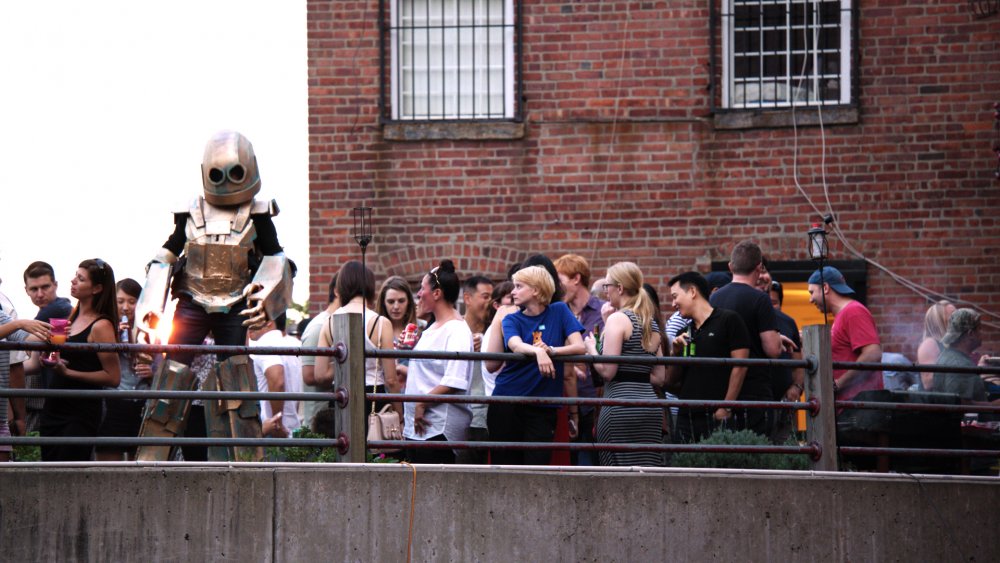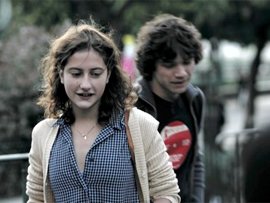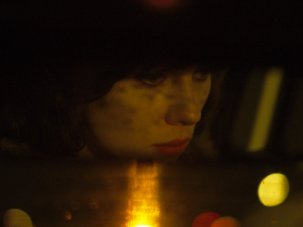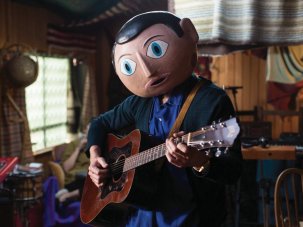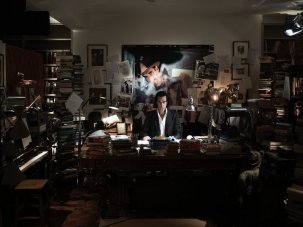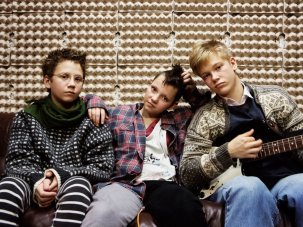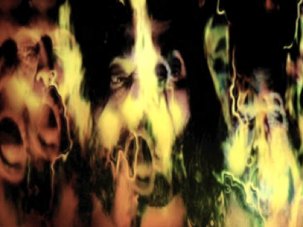The most unsung moment of Boyhood is an actual unsung moment: when Daft Punk wouldn’t allow the use of Get Lucky in the theatrical release, despite the song’s appearance in festival cuts. The initial version, which I caught at a press screening, sprung the opening chords to mark the arrival of 2013, signalling that Mason was catching up with the present. “It’s the 12-year journey from Weezer’s Island in the Sun to Daft Punk’s Get Lucky,” I told my friends, hoping they’d join me on opening weekend. They did, and neither song was present – I was accused of perpetrating the strangest lie.
Eden is now on UK cinema release.
What happened was Daft Punk turned down Richard Linklater. That’s not to say the French DJ act don’t appreciate being part of an indie epic recounting the story of one person over countless years. Rather than be tied down to a specific summer in Boyhood, Daft Punk tracks appear throughout Mia Hansen-Løve’s poignant Eden – a sonic heartbreaker spanning two decades, oblivious to the passing of time between club nights. Director Ana Lily Amirpour phrased it succinctly in a tweet: “Just watched Eden which is kind of like Boyhood for the house DJ.”
It isn’t surprising Guy-Manuel de Homem Christo and Thomas Bangalter are so meticulous in curating their involvement with the silver screen. Their first music videos were directed by Michel Gondry and Spike Jonze, while the trademark robot costumes were designed by the same guy responsible for the special effects in, erm, Shallow Hal. Just as the tracks makes use of 70s samples for a sense of timelessness, an anti-ageing streak runs throughout their associated film projects.
DAFT: A Story About Dogs, Androids, Firemen and Tomatoes (1997)
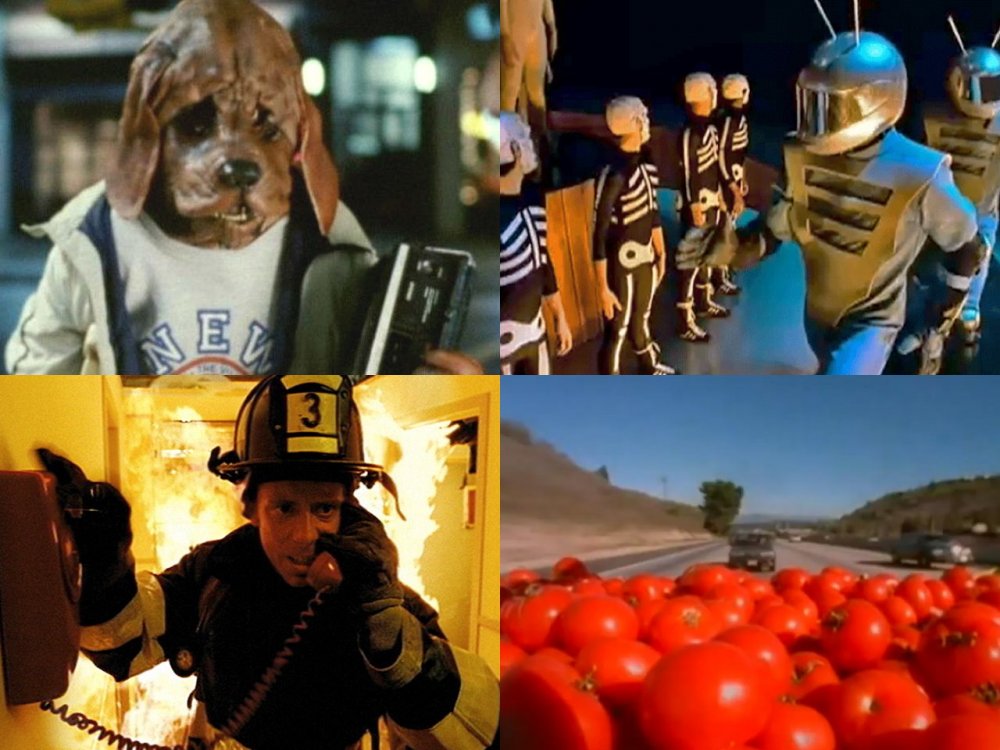
DAFT: A Story About Dogs, Androids, Firemen and Tomatoes (1997)
Daft Punk were already honing their own brand of anonymity around the release of debut album Homework. They conducted interviews with paper bags over their heads (Shia LaBeouf’s plagiarism knows no bounds) and released a collection of music videos and mini-docs striving for timelessness. The ‘DAFT’ in the title is a fair assertion. So is the subtitle: there’s Spike Jonze’s Da Funk (dogs), Michel Gondry’s Around the World (androids), Seb Janiak’s Burnin’ (firemen), and Roman Coppola’s Revolution 909 (tomatoes).
Gondry reveals in his segment that he was seduced by the minimalist instrumentation that stops at the right moment, just before it’s overwhelming, as if designed for eternal looping. That explains Gondry’s visual representation of Around the World as a finely tuned machine, consisting of choreographed humanoid cogs. Burnin’ [►] and Revolution 909 [►] also riff on the idea of parties refusing to end, regardless of a building catching fire, or a grumpy policeman with a tomato-stained shirt (which probably helped Coppola prepare for reviews of his 2012 straight-to-VoD flop A Glimpse Inside the Mind of Charles Swan III).
The standout, Da Funk [►], is a tragicomedy conceived by Jonze about the follies of owning a boombox. Charles is a dog with a wounded leg and wounded heart: after bumping into human crush Beatrice on a bus, it’s only a few beats later when he’s ejected for violating the ‘NO RADIO’ policy. Of course, the dog is just an actor in a mask – surely a template for the sci-fi helmets – which precedes Jonze’s other half-human romances: with puppets (Being John Malkovich), book sleeves (Adaptation) and phones (Her). It’s a signature tune with a life of its own. When Mia Hansen-Løve puts the song in Eden, one character exclaims: “Da Funk – it fucking rocks!”
But Da Funk spawns a sequel in Fresh [►], which amounts to Daft Punk committing to ‘the bit’. Charles is revealed to be an actor (still in dog form) directed by Jonze on a beach, and in reality dating Beatrice. Is a happy ending a way of immortalising the moment? When the couple drive into the sunset, it’s hard to argue that it isn’t puppy love.
Interstella 5555: The 5tory of the 5ecret 5tar 5ystem (2003)
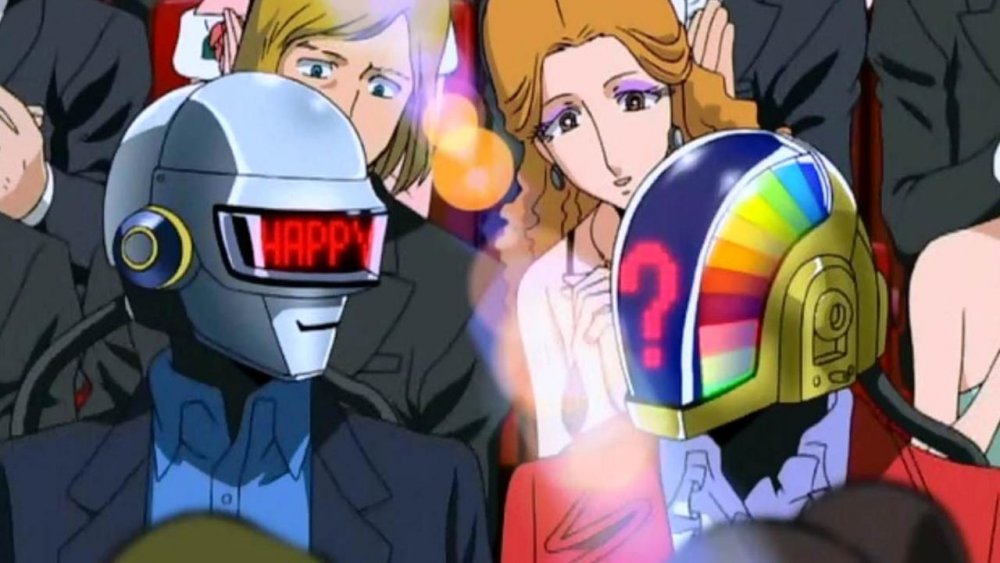
Interstella 5555: The 5tory of the 5ecret 5tar 5ystem (2003)
The Wizard of Oz and Pink Floyd’s Dark Side of the Moon don’t sync, no matter what you do with the remote control. However, Daft Punk sought anime legend and childhood hero Leiji Matsumoto to help design visuals for an hour-long sci-fi animation to complement their second album, Discovery. Under the direction of Kazuhisa Takenouchi, Interstella 5555 has no dialogue or subtitles, and plays along to the record’s exact tracklisting.
Although the band makes a brief cameo as their newfound robot counterparts – created in response to the fame brought by Discovery – the main music act is The Crescendolls, a rock band hypnotised by a record company into churning out mindless pop hits. Their keyboardist is a blue dude named Octave with a passion for chess; the guitarist is a Londoner called Arpegius. What’s not to love?
As the dreamlike sequences unfurl, it’s apparent how the soundtrack bears the anachronism of a futuristic vibe grounded in retro 70s samples. The Crescendolls face a similar dilemma: the band lose their identity when their memories are stolen, leaving them as yet another soulless manufactured pop group. Their hit single happens to be One More Time, a track which plays the lyrical joke of repeating its title ad nauseam – a comment on electronic dance music’s addictive nature, as evident by the same song’s prominence in Eden.
Insterstella ultimately follows the Lego Movie brick road by revealing that the entire movie exists in the imagination of a child playing Discovery on vinyl. Just as Speak Low will never sound the same following Christian Petzold’s Phoenix, it takes a few notes of Night Vision for me to recall the midnight car chase. It’s ten times more riveting than Chris Nolan’s Interstellar, and I’d definitely rather listen to Daft Punk than Hans Zimmer.
Electroma (2006)
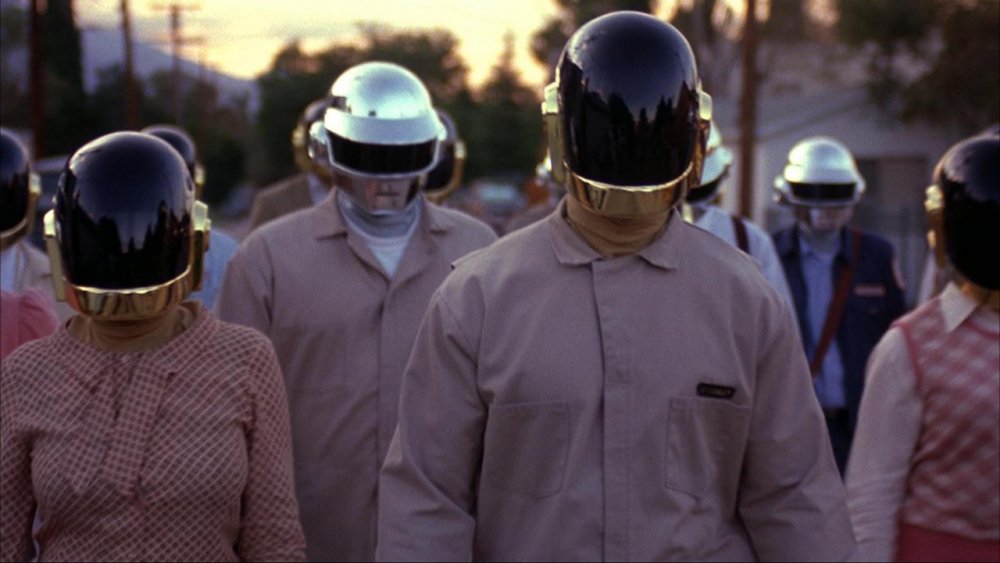
Electroma (2006)
A third album, Human After All, meant a third film – and also a Cannes premiere. Although the band’s directorial debut features themselves as the main two characters, it’s actually actors inside the robot costumes. No surprises there. What is head-scratching (an involuntary action when watching someone wear a helmet) is the duo’s music doesn’t feature on the soundtrack. The minimalist drama often plays like a silent music video: there’s no dialogue, creating a Dadaist effect reminiscent of Gus Van Sant’s Gerry with two androids trudging towards guaranteed self-destruction.
Being a Daft Punk impersonator is easy: you don’t have to talk, show any facial expressions or worry if the camera is catching your best side. The two robo-tagonists cruise down the freeway in a Ferrari, as if from a 70s road movie – but Two-Lane Blacktop never saw its drivers park in a town all of whose inhabitants are also androids with Daft Punk masks. The ‘HUMAN’ license plate is a clue for their motive: to find a white room where prosthetic faces are surgically placed over their helmets, because that’s apparently all it takes to become human.
Stepping outside with their ill-fitting heads – think of the monster in Inland Empire – the cruel sunlight melts the artificial smile off their faces. When the human features are burned off, the locals chase them out with a pitchfork as a punishment for musicians expressing individuality. As with Interstella 5555, the key to artistic ‘success’ is giving in to conformity.
The latter half details a march into the desert so arduous no one in their right minds would attempt it without an iPod. Instead the two characters trudge in complete silence until a shocking moment: one robot removes its helmet to reveal a circuit board beneath. In a world of digital identities, there’s no humanity left – and that, it seems, is a small sacrifice for achieving immortality.
Tron Legacy (2010)
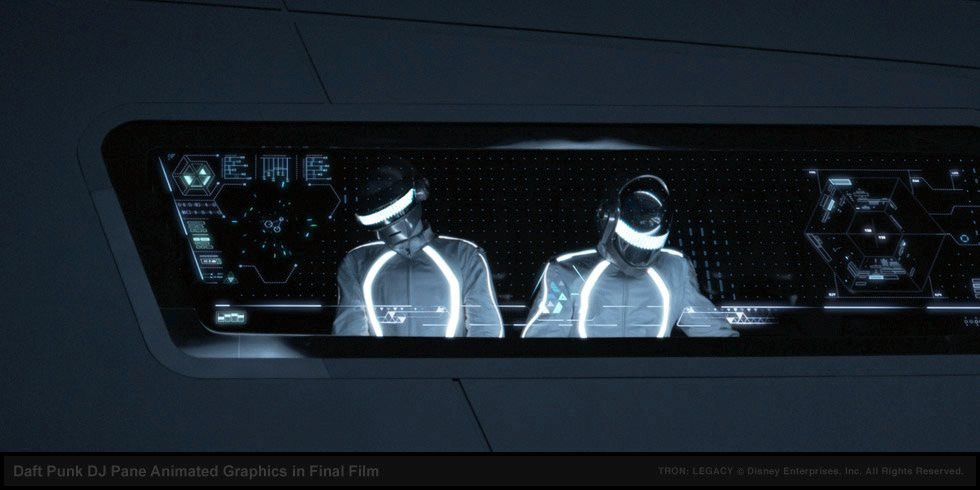
Tron Legacy (2010)
The announcement that Tron Legacy would be released with five specially shot IMAX scenes was supposed to excite both lovers of the original 1982 Tron and anyone with an irrational passion for shifting aspect ratios. But the prospect of a big screen also meant an extended stereo effect for its score, written and performed by Daft Punk – both of whom were childhood fans of the original.
Disney’s CG blockbuster also shares thematic and plot crossovers with Daft Punk’s prior movie projects. The central conceit – humans as algorithms, waiting to be downloaded – is touched upon in Interstella 5555 when the band’s memories are copied and pasted to a disk. So too is the ending when Quorra, an ‘isomorphic algorithm’, rides on the back of a motorcycle so she can see sunlight: an optimistic twist on the robots of Electroma timing their suicide for a bright afternoon.
So why are Daft Punk so restrained? The closing moments, which scream for some sort of EDM closure, are complemented by dull, tasteful strings. Elsewhere the score is background music losing the battle against computer-game sound effects, revved up engines and Jeff Bridges’s line readings. The band’s presence is only truly felt during their cameo as hired DJs at a party, in which all of a sudden the beats are more arresting, and so too the squelching synths.
And then you see the pair in their helmets behind glass. They’re just hired hands in the corner, dressed to match the sci-fi furniture. Perhaps the soundtrack, like the film entire, makes more impression on the big screen – but when I sit at home with the DVD, listening on headphones, I hope Daft Punk would approve.
Eden (2015)
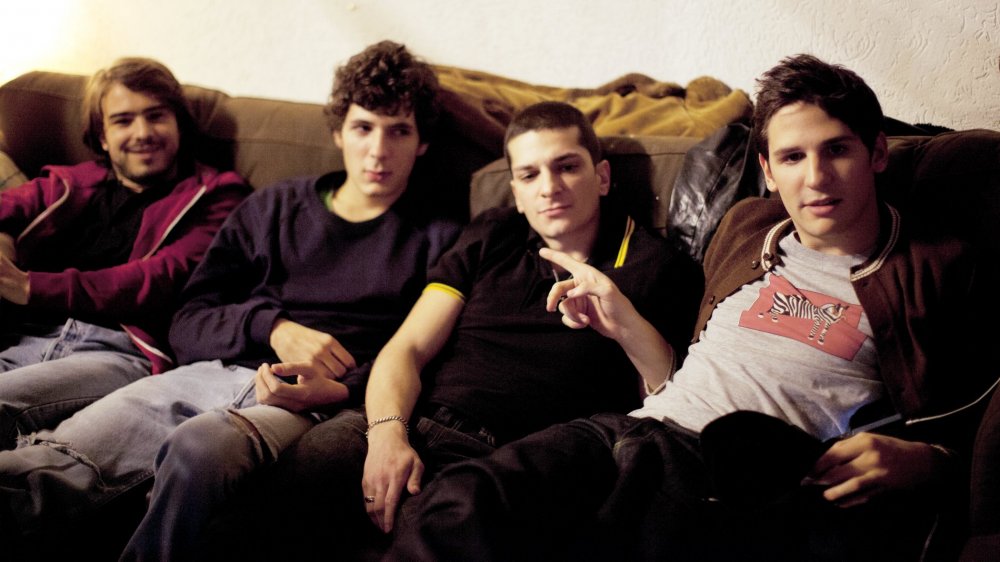
Daft Punk in the house: Eden’s versions of Guy-Manuel de Homem Christo and Thomas Bangalter, centre, played by Arnaud Azoulay and Vincent Lacoste
Eden follows Mia Hansen-Løve’s previous feature, Goodbye First Love, in having a main actor who never physically ages across the decades. (How very unlike Boyhood.) The central victim is Paul: incapable of growing old, he’s symbolically handcuffed to his youthful looks as the story progresses through the 90s and 00s. It’s the adolescent exterior that forms the character’s own protective Daft Punk helmet.
Paul (“barely 20, very talented”) is loosely based on Mia’s brother Sven, a DJ who emerged alongside Daft Punk in the 90s French touch movement and helped instigate underground raves. Paul is also a nightly partier in denial about an untenable lifestyle, sharing similar ground with the depressed male figure of Løve’s The Father of My Children. Beginning as an ensemble film, Eden turns into the slow-burn tragedy of the loser left behind – like seeing who stuck around for the straight-to-DVD American Pie releases. Paul’s girlfriends disappear for years, only to return with amazement that he’s barely changed: inertia through EDM, drugs and short-term flings.
We also get a glimpse of the ‘real’ Daft Punk as two slackers in jeans. A running joke sees Thomas and Guy (again, played by actors) turned away by bouncers for being unrecognisable without the masks. Even with international stardom, the duo are the same scruffy youths they’ve always been. Perhaps the Dorian Gray trick comes from being lost in the genre’s hypnotic beats, grabbing hold of the present tense and never letting go. “We don’t keep a record of time when we make music,” Daft Punk confessed in an interview. It could be a line of dialogue.
By the end, Paul spots a shift in the French house scene – specifically a club where the DJ is a MacBook. It’s partly why Daft Punk ditched their traditional sample-heavy compositions for 2013’s Random Access Memories, opting for session musicians who replicate the sound of the 70s. In stark contrast to the ironic Que Sera Sera blasted over the credits of The Father of My Children, the finale of Eden is a Robert Creeley poem. Each word appears onscreen, rhapsodising about how life is an unstoppable rhythm, bending all to its force, meaning there’s no shame in being one of many caught unaware by the passing of time. It’s a sentiment that could be summed up by the bass line of Da Funk.
In the August 2015 issue of Sight & Sound
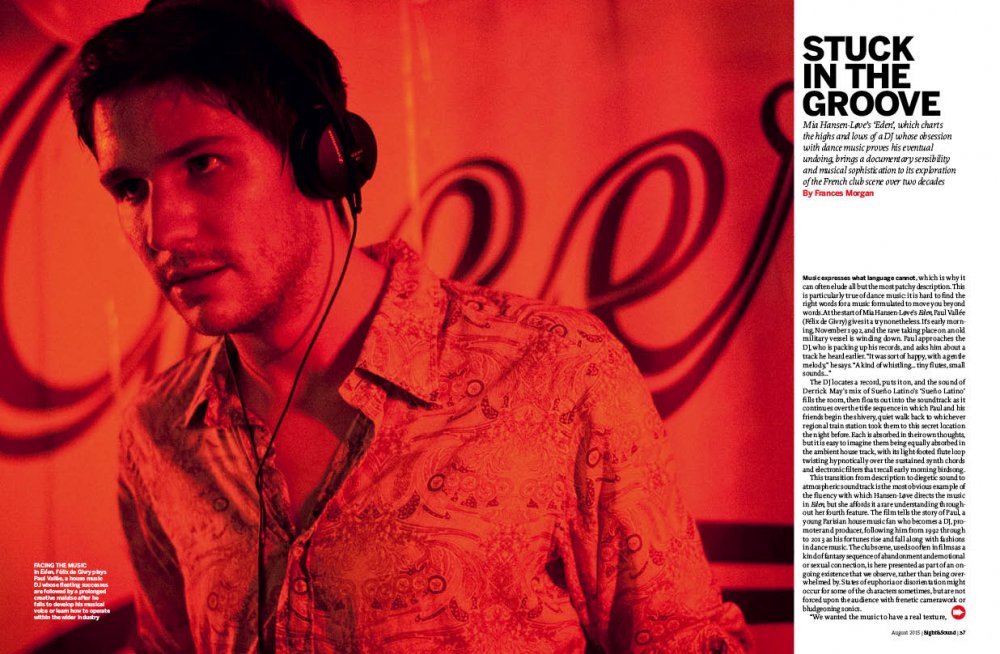
Stuck in the Groove
Mia Hansen-Løve’s Eden, which charts the highs and lows of a DJ whose obsession with dance music proves his eventual undoing, brings a documentary sensibility and musical sophistication to its exploration of the French club scene over two decades. By Frances Morgan.
-
The Digital Edition and Archive quick link
Log in here to your digital edition and archive subscription, take a look at the packages on offer and buy a subscription.




